Trial closure for Lower Cascades road starts this Friday
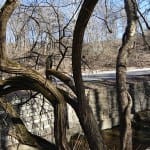
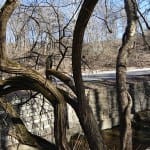
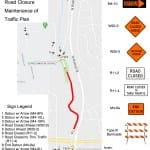
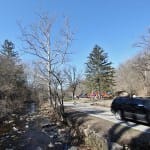
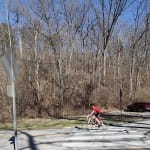
Starting this Friday, about 500 motorists a day in each direction, will need to find a different route through Bloomington’s Lower Cascades Park.
The section of Old 37 Highway, which used to be the only way to get into Bloomington, will be closed to motorized traffic inside the park. The southern closure point is at the Irving Materials, Inc. (IMI) driveway, just north of the underpass at State Road 45/46. The northern closure point is at the the parking lot across the road from the playground.
The pilot program, which is supposed to end Sept. 30, was approved by Bloomington’s three-member board of public works at its regular meeting a week ago.
The idea is to close the 0.6-mile segment of road “to expand and integrate with Bloomington’s network of walking and biking trails; provide a safe, accessible destination for recreation and exercise; and to offer bicycle commuters additional options for safer routes.”
According to Paula McDevitt, director of parks and recreation, motorists approaching from the south will have parallel parking available on both sides of the road near the underpass, and a place to turn around. Motorists approaching coming into the park from the north will be able to drive down and park at the lot near the playground, and walk the rest of the way to the Waterfall Shelter.
The usage of the shelter during the pilot period is one of the statistics the parks staff will monitor to gauge success of the trial closure. Based on numbers from the city’s B Clear Data Portal, the shelter has seen an average of around 65 reservations a year from 2000 through 2018. For the same period, that’s about the same number of reservations at the shelter in north Bryan Park. The other shelter in the Lower Cascades Park, Sycamore Shelter, has been reserved an average of 73 times a year.

Beth Rosenbarger, planning services manager in the city’s planning and transportation department, told the board that the city has no existing counts of people walking, running and bicycling in the park. That will make it challenging to evaluate the pilot’s success, she said.
Heading up the effort to measure how well the pilot works, Rosenbarger said, are Devta Kidd, director of innovation, and Mallory Rickbeil, the city’s bicycle and pedestrian coordinator.
The rough number of 500 motorists in each direction per day through the park comes from a traffic count done in May 2018. Rosenbarger told the board that when it was measured between the Clubhouse Drive and IMI driveway, the daily count was 942 vehicles, evenly split between the two directions.
The average sped was 29 mph, which is 9 mph higher than the posted speed limit of 20 mph. The 85th percentile was 34 mph. That means 15 percent to motorists drive faster than 34 mph along that stretch.
During remarks from the public podium, the excessive speed of motorists in the park got a couple of mentions.
A resident of the northwest part of the county, Janet Nichols, acknowledged that some cars do drive faster than the posted speed. But she opposed the closure of the road, because it eliminates an alternate route for emergency vehicles, if North Walnut is blocked for any reason. She also said she and her husband use the park road and an alternate way home—they call it “Tranquility Drive.” Motorists can also get peaceful enjoyment from that stretch of road, Nichols said. She added, “You don’t have to be just a pedestrian or a bicyclist to do that.”
About the way cars pass him too fast and close when he’s pulling his kids in a bicycle trailer, Greg Alexander told the board: “It’s ridiculous. It’s terrifying.”
Alexander told the board that other improvements in the area are crucial to making the road closure a permanent success. Among those improvements are connections between Clubhouse Drive to Bloomington North High School, a connection to Lower Cascades from to Miller-Showers Park and a connection to Arlington Heights Elementary or Kroger. Alexander hopes that by the time his children are high school age, they will be able to get to Bloomington North independently, using the non-motorized connections.
Two members of the city’s bicycle and pedestrian safety commission, Mark Stosberg and Ian Yarbrough spoke in support of the proposal during the public commentary period.
Alexander said now that the road will be closed for the pilot, it’s important to keep it closed permanently.
Closing the road permanently would require the approval of Bloomington’s city council, director of public works Adam Wason told the board.
Opinions from the public on the pilot closure of the road through Lower Cascades Park can be given through an online survey form.
People can also call the board of public works at (812) 349-3410 or the parks department at (812) 349-3700. Staff will record remarks of callers systematically in a survey form, McDevitt said.




Comments ()